Lane Caudell: Lost Somewhere on the Road between Franklin High and Nashville
A review of his rock ’n’ roll years with Skyband and acting years in ‘Goodbye, Franklin High’ and ‘Hanging on a Star’

“I’ll be damned, Lane Caudell? As I live and breathe. It’s great to see you! Where the hell have you been? What happened to you, brother?”
Yeah, I’m a Lane Caudell Fan . . .
I love running into old friends. I enjoy that firing tingle of my brain’s synapses as my eyes take in the angles and features of that familiar face, my ears hearing the warm tones of their voice, my heart smiling as I rejoice that they haven’t lost their appealing personality quirks and attention-grabbing demeanor that cemented our friendship in the first place.
Sadly, time ticks and clocks nibble away at our memories as we mature from kids into teens, then adults. Then, society says we must marry. We must have children. Along the way we experience death, mortgages, layoffs, firings, and divorce — all which affect our ideals and interests. Hobbies — once instrumental in our childish teen survivals — become specs of dirt in life’s dustbin. Friends become a haze in the edge of dream. Bizarro-friends — our enemies — hide out in the dark corners around those edges and jump out in our nightmares.
Of course, with today’s digital technologies seeding the ever-expanding social media universe, we can tempt the dustbins of fate and computer-engineer our life’s dirt to do our bidding, for we each exist in our own mini-Kevin Baconesque universe — our Internet brooms ready for their six-degree sweep of those lost friends back into our life. The Italian filmmaker Michelangelo Antonioni was right: technology doesn’t dehumanize man. Man dehumanizes man. The Internet isn’t humanity-stripping. The Internet — like any other broom, in the proper hands and used correctly — can be used productively. (And in the case of an enemy: we bust off the bristled end over our knee and spin that broom handle in a grand, cinematic kung-style and go all “Roadhouse” on their ass!)
But where’s the fun in tempting — taunting — fate in today’s digital universe? Why not let the Fates do what they do best without any digital assistance — you know, like in those pre-Bill Gates years? Just an old fashioned “analog” kismet, such as at a coffee shop, a public library, or grocery shopping? I enjoy when those friends of yore have a tendency to reappear unexpectedly in those most unlikely of places by analog fate and not digital force; however, I certainly didn’t expect to run into one particular friend amid the digital scrolls and hyperlinked pages of a horror-centric webzine.
Bloody Disgusting recently posted a story about a gritty, low-budgeted horror film, Getaway Girls, written and directed by Toran Caudell who, as a teen, found success as an actor on the WB Network and as an animated voice artist for the Disney and Nickelodeon Networks. While this writer never watched any of his TV series, I was intrigued to hear a child actor beat the so called “child actor curse” and continued to flourish in the business as an adult. Upon a further Internet-investigation of the film, it’s discovered that Toran Caudell is the son of actor-musician Lane Caudell, he the star of two of the coolest, fondly remembered films of this writer’s ’80s U.S UHF-TV and video store youth — Goodbye, Franklin High and Hanging on a Star.
Thanks to Lane’s son, it marks the first time that old, familiar face from my youth has acted in front of the camera since eschewing the acting world after the 1982–1983 season of the NBC-TV U.S daytime serial, Days of Our Lives. (I know. I know. Yes, I watched DOOL. For reasons lost in the corners of my mind, somehow my sister negotiated “TV rights” after school, so I was stuck watching DOOL and General Hospital. Well, not really. When Diane, your sister’s very cute friend from school, plants herself in front of your TV to watch soap operas . . . teen hormones must make sacrifices.)
A few days after discovering the Bloody Disgusting article, a couch-grazing binge of a few episodes of A&E’s Hoarders inspired a deep dive into the long-forgotten spare bedroom and hallway closets for a belated (and “adult”), much needed spring cleaning — closets which also hold a now lazily misfiled vinyl music and video tape collection. That domesticated archeological dig uncovered long-forgotten vinyl copies of Lane’s two MCA albums: Hanging on Star and Midnight Hunter. There they were, out in plain view.
Dude, it’s a sign. Toran of Malveel is recruiting you for a quest beyond the sun’s horizon. Sharpen your broadsword. Mount ye steed and ride, R.D!
The Fates of Rock ’n’ Roll, yet again, are telling this writer to sit down and preserve the career of another rock ’n’ roll phantom. So, this writer welcomes you, the reader, to this retrospective of an actor and musician that I hold in high regard, right up there with Kim Milford (and Italian action-actor Michael Sopkiw): Ladies and Gentlemen, welcome Lane Caudell to my digital stage.
Take the Last Train out of Asheboro . . .
A mere two years after graduating from Asheboro High School in North Carolina, Lane scored his first recording contract at the age of 20, with Capitol Records issuing his debut single, “Let Our Love Ride b/w You, Him & Her” (July 1972), along with the sophomore effort of “Play On, Play On b/w And Then We Danced” (January 1973).


The A and B sides of Lane’s Capitol debut 7" 45-rpm single.


The A and B sides of Lane’s second 7" 45-rpm single.
Being a youthful, fresh-scrubbed male with a bright smile and angelic feathered-coif, musicians like Lane — regardless of their superior songcraft skills and desire to be taken seriously for their music — were manufactured into “teen idols.” Neil Bogart’s Budda Records (Bogart later founded Boardwalk and Casablanca) was killing it in the teen idol ’n’ bubblegum music business that ruled from 1967 to 1973 and Capitol wanted a slice of that early-Beatles inspired, tenny-bopper pie. So they signed Lane Caudell . . . and Rick Springfield.


Did Lane “sweep” Marisa DeFranco off her feet? And there’s Lane with his Capitol labelmate, Rick Springfield.

Lane with David, Donnie, and Michael Gray.
. . . And so Lane found himself in the pages of 16 and Tiger Beat advising swooning girls of his favorite ice cream flavor and his idea of a “great date”; alongside teen-queen Marisa DeFranco of the DeFranco Family (“Heartbeat — It’s a Lovebeat”) he marketed the latest fashions from J.C Penny. Sadly, even with the full court press of the worldwide teen magazine industry behind Lane, his singles failed to set the retail and radio world on fire. A David Cassidy rise to fame was not forthcoming. Capitol opted not to go with a full-length album. (My sister used to drive me nuts perpetually spinning “Heartbeat — It’s a Lovebeat” . . . but this cutie pie named Linda from across the street used to hang out with my sister and listen to records. Again, taking a bullet for those hormones.)

Lane (bottom left) next to Michael Gray, Susan Dey, and Michael Jackson, along with Donnie, David, Rick, and the Keane Brothers.
While Lane was writing songs and forming his first bands in high school, the first gooey wave of poptastic bubblegum music crashed on the sugary teen-idol shores stormed by Elvis, Fabian, Frankie Avalon, and the Beatles — as spearheaded by the Lemon Pipers’ U.S #1 single, “Green Tambourine.” Others musicians riding that industry-manufactured, sticky-sweet pipeline were the Music Explosion with “Little Bit O’ Soul,” the Ohio Express with “Beg, Borrow and Steal” and “Yummy, Yummy, Yummy,” the 1910 Fruitgum Company with “Simon Says,” and Sopwith Camel with “Hello, Hello,” just to name a few.
While most of those hits were created by Bubblegum pioneer-producers Paul Eka and the Super K Productions team of Jerry Kasenetz and Jeffry Katz, the Granddaddy of delicious pop platters, Don Kirshner, eclipsed them all with an unstoppable series of goes-down-like-gumdrops hit singles by the Monkees and the Archies.

Lane with fellow “teen idols” the Hudson Brothers.
Then Davy Jones of the Monkees relinquished his teen-idol crown to David Cassidy who, like Davy Jones before him, had his hit music career fueled by an immensely popular TV series — The Partridge Family. Then along came Bobby Sherman who also issued a series of sugary AM radio-ready singles and appeared on U.S television screens in Shindig! and Here Comes the Brides (which co-starred David Soul, later of Starsky and Hutch fame). When an U.S-obscure Australian band by the name of Zoot began to garner recognition outside of the Land of Oz, the band’s lead guitarist, Rick Springfield, was extracted by the industry’s wicked witch and fitted for a pair of red ruby sneakers. In addition to getting the lead in his own animated Saturday morning cartoon series, Mission:Magic!, Springfield charted with the bubblegummy 1972 U.S Top Ten hit, “Speak to the Sky.” Also appearing on Saturday morning U.S television alongside Springfield were the Hudson Brothers with their innocuous variety show, Razzle Dazzle. All appeared in the pages of teen magazines — 16 and Tiger Beat, in particular.

Lane’s lone single release for MetroMedia. Notice the company’s tie-in with RCA.
Also sharing the pages with the bubblegum rockin’ teen idols of David Cassidy’s half-brother, Shaun, Leif Garrett, Donnie Osmond, Tony DeFranco (of the DeFranco Family), the Keane Brothers (who, as with Bobby Sherman, were introduced to U.S audiences via an appearance on The Partridge Family), and The Bay City Rollers — there was Lane Caudell. In fact, Caudell and Sherman eventually became label mates on MetroMedia Records; Bobby was the label’s biggest selling artist. When the teen-idol bubblegum industry burst, so did MetroMedia Records. And Lane lost his second recording contact.
Pop Goes the Sky!
Meanwhile, across the pond, as Lane spun in the music industry’s cotton candy machine with the hopes of being taken seriously as a musician, a guitarist-singer by the name of Peter Beckett auditioned for the Beatles-inspired Badfinger, then hot with their Paul McCartney-penned worldwide smash “Come and Get It” — but he lost the coveted gig to Joey Molland.
At that point, Beckett joined a British progressive-rock outfit called Paladin, which issued two albums in the early seventies. Upon the breakup of Paladin, Peter joined the already successful Australian-British pop band Tin Tin, which had a Top 10 U.K and Australian Bee Gees-flavored hit with “Toast and Marmalade for Tea.” When Tin Tin lost a member to the Bees Gees, Peter auditioned. He got the gig. Then, as fate would have it: Tin Tin split.
Fast forward to 1974 Los Angeles: Peter Beckett reconnected with ex-Tin Tin’er Steve Kipner in the pop-rock outfit Friends, which also featured Daryl Cotton, formerly of Rick Springfield’s previously discarded band, Zoot. The new band issued two 45-rpm singles: “Gonna Have a Good Time” and “Would You Laugh,” along with a full album.

Sadly, the cackling Fates manning the spinning wheel decided Friends were not meant to be “friends” and the band split amid the obligatory artistic differences and managerial tomfoolery. The album was shelved. Ever diligent, Peter and Steve picked up the pieces one more time — and recruited the now ex-teen idol Lane Caudell for a reconstituted version of the band. With Warren Enter of Grass Roots as their manager (read more about Warren’s music management endeavors here on Medium with this writer’s feature story on Rockicks) and backing from Elvis’ label, RCA Records, the Mach II version of Friends was rechristened as Skyband — they issued their one and only self-titled album in 1975.
While U.S and European rock critics responded favorably to Skyband’s harder-edged, Bee Gees-inspired lush, orchestrated pop sounds crossed with Hollies-leaning harmonies (see the Cashbox review at the end of this article), U.S and U.K radio universally rejected Skyband’s bubbly, poptastic should-have-been-hits with “Bang! Ooh! You Got Me!” and “Pie in the Sky.” Critically well-received U.S, British and European tours opening shows for Peter Noone (of the highly Euro-revered Herman’s Hermits; Peter was a huge overseas solo artist at the time), the Jackson 5, and the Sensational Alex Harvey Band failed to launch Skyband into the stratosphere.

Hey, wait a minute . . . Skyband . . . I remember hearing their song “Wildflower” on Top 40 AM radio in 1972.
No, that was a band out of Canada by the name of Skylark.
Yeah, he’s right. Skyband did that Bee Gees-inspired disco song “Skyhigh” in 1975.
No, that was a band out of England by the name of Jigsaw.
Yeah, Dude, don’t you remember that old Skyband album we found at the record store — and Doug Fieger of the Knack was on the cover?

Nope. That band, coincidentally, also on RCA, were called Sky. They were out of Detroit.
Did they do “Let Her In?
That’s John Travolta from 1976.
“Don’t Give Up on Us”?
That’s David Soul from 1977.
I know! Skyband did that song “Makin’ It” from the Bill Murray movie, Meatballs. And Lane starred in Makin’ It! the ABC-TV series based on the song.
Yeah, and he was Shazam! on TV. And he was Marsha’s boyfriend on The Brady Bunch.

Wow. Now you’re just embarrassing yourself, guys. “Makin’ It” was David Naughton, the old Dr. Pepper soft drink TV pitchman. Shazam! and Marsha’s boyfriend was actor Michael Gray. Come to think of it, they all do look the same.
Okay, R.D, ‘Mr. Big Shot’ of the vintage record bins . . . what happened to Skyband?
The failure of the retail and radio marketplace discovering the great pop sounds of Skyband’s excellent album boils down to a very bad album cover.


Skyband’s lone album issued in 1975 by RCA Records.
Somewhere in the managerial and record executive collective guiding the band, it was decided outfitting the band shirtless (which didn’t work for Peter Frampton or Billy Squire, either) in cosmic Kiss-cum-Barbarella-inspired silver lamé outfits complete with feathered headgear was the right “image” for the band — maybe for Cher or LaBelle . . . but not for a rock band. The end result: Skyband “looked” too progressive-rocky (see Peter Gabriel’s get ups for Genesis as an example) for the teen-magazine crowd, and when the album cover crossed the desks of snobby AM Top 40 and progressive FM rock radio programmers — they scoffed and passed over the “disco” record. Even though the band never appeared live wearing their sci-fi Indian outfits (this writer can find no evidence of it), instead wearing the usual Brady Bunch-styled ’70s bell bottoms, wide-collared silk shirts, and Puka shell necklaces — the damage was done.
Luckily, Lane had already begun to study acting, so he quit the band to pursue the craft full time; Skyband pressed onward. In keeping with the group’s Grass Roots connections, Reed Kailing from the ‘Roots replaced Lane; with a few more roster changes and with Peter Beckett still at the helm, Skyband transformed into Player, which scored a U.S #1 debut single and Top Ten hit follow up with the soft-rock pop classics of “Baby Come Back” and “This Time I’m In It For Love.” During his post-Player career, Beckett joined the ranks of fellow soft-rock chart toppers Little River Band and Ambrosia.


Goodbye, Record Business. Hello, Hollywood!
As with Rick Springfield and Kim Milford (read more about his career on Medium) before him, with Lane’s musical endeavors not bearing financial or chart fruits, he took up acting as a sideline to make financial ends meet. That’s when he met filmmaker Mike MacFarland who served as the Executive Producer on what was to become an exploitation teen-horror film classic, Satan Cheerleaders (1977), and Lane, in a support role, made his acting debut. (This writer wonders: Since Rick Springfield was in Battlestar Galactica, and every “youthful” actor in Hollywood under the age of thirty auditioned for the roles of Luke Skywalker and Han Solo in Star Wars, did Lane also audition for those parts? He certainly fit the physical qualities of the roles. Check out Lane’s lead role in the sci-fi romp Archer: Fugitive from the Empire and compare.)
Under the managerial wing of Cal-Am Productions (which went out of business in a blaze of glory with the 1978 Drive-In horror nasty The Toolbox Murders), and with Mike MacFarland in the director’s chair, Lane made his debut as a leading man in the baseball comedy-drama, Goodbye, Franklin High, and the rock ’n’ roll follow up, Hanging on a Star — both backed by the Great Lion of Hollywood: MGM Studios.


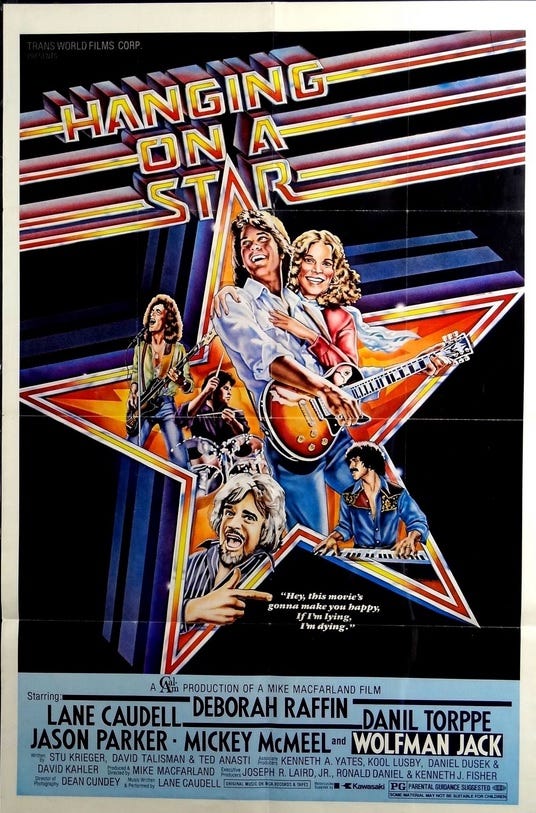

Theatrical one-sheets and video VHS box from Lane’s first three movies.
According to dvddrive-in.com: On the DVD commentary for Satan’s Cheerleaders, director Greydon Clark stated Mike MacFarland offered an additional $25,000 to the production for a producer credit and if Clark would use Lane Caudell in a role, who he was considering for a lead in a film he would direct, which became Goodbye, Franklin High. The extra money improved the film’s production values, allowing Clark to sign a SAG contract and hire recognized SAG actors in John Carradine, Yvonne deCarlo, and John Ireland, along with Charlie Chaplin’s Tony Award-winning acting son, Sydney, and noted TV character actor, Jack Kruschen.
While there are two songs, “One for All and All for One” and “Who You Gonna Love Tonight,” by a band known as Sonoma in Satan’s Cheerleaders, it is unknown if Caudell was involved with the production of those songs. Greydon Clark makes no mention of the songs in his commentary or if Caudell assisted on the soundtrack.
While Caudell provided several songs to Goodbye, Franklin High, no official soundtrack or promotional 45-rpm singles were released to radio or retail.
Sadly, today’s nostalgic film critics lump Goodbye, Franklin High with the glut of teen exploitation flicks (that’s an article unto itself!) haunting Drive-Ins in the ’70s, such as The Pom Pom Girls (1976), The Van (1977), Malibu Beach (1978), and Swap Meet, Van Nuys Blvd., H.O.T.S, and Gas Pump Girls (1979). In reality, Goodbye, Franklin High lacks any of those films’ American Graffiti-inspired T&A foolishness to tell a tale with a softer ABC Afterschool Special-styled storyline about a young man facing his future: go to college or play pro-ball? The film actually has more in common with one of Sam Elliot’s earliest dramatic film rolls (Roadhouse, Ghost Rider), Lifeguard (1978), itself a coming-of-age drama of dealing with one’s future, than with any of the T&A brethren released during the same period.
Then, Cal-Am Productions, in conjunction with MCA Records and MGM Studios, customized a project that would spotlight not only Lane’s acting chops, but his music abilities as well. That film was later to become a U.S UHF-TV and video store classic, Hanging on a Star, a comedic chronicle of “The Jeff Martin Band,” a hot rock band on their way up the charts. (In a teen-idol doppelganger: Leif Garrett also starred in a teen Drive-In rock flick of his own, Thunder Alley — which made the rounds on cable, UHF-TV, and video store shelves in the ’80s. Rick Springfield eventually starred in his own, similar flick: the critically lambasted Hard to Hold.)

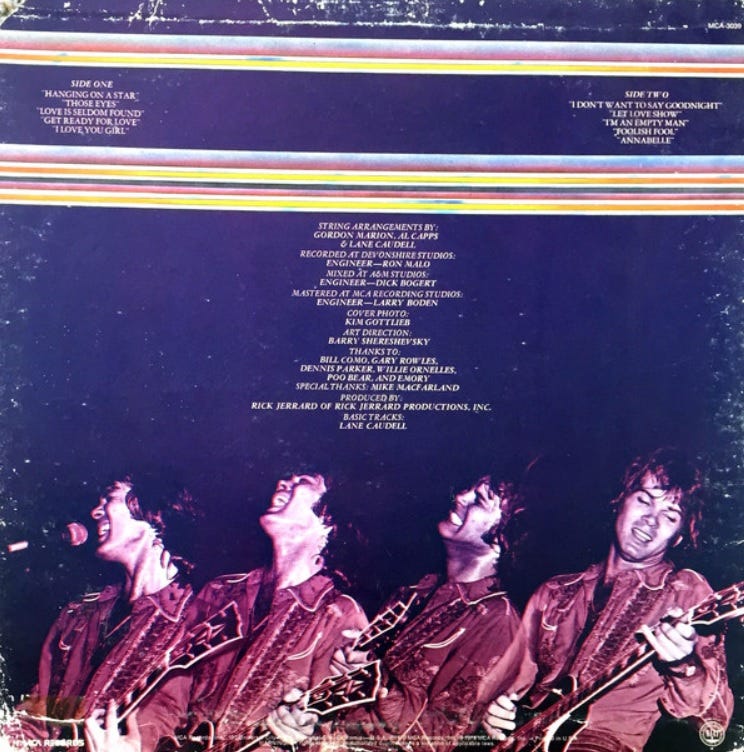
Lane’s solo album debut issued by MCA Records.
Adventures of a Midnight Star Hunter
Six years after issuing his first single in 1972, Lane finally released his first solo album proper: Hanging on a Star. Although several songs from the album also appeared in its companion film, the album was not marketed as an official soundtrack. Sadly, while a well-devised dual marketing plan, neither the album nor the film lit up the charts or box office. The film did find a subsequent, enthusiastic audience on U.S cable television, which led to Lane’s fans — including this writer — to posthumously purchasing copies of the album in the used record store aftermarket (just like we did with Matt Dillion’s film debut, Over the Edge; it’s how we discovered Cheap Trick, Van Halen, the Cars, and the Ramones).
Not giving up on Lane, MCA financed a second album: Midnight Hunter. In addition to writing all the songs on both albums, most with his partner, Harry Lloyd, Lane served as his own producer and engineer. MCA spared no expense in giving their very best to make a solo career happen for Lane. In addition to having Lane backed by respected arranger-producer Al Capps (Lennon Sisters, Everly Brothers, Frank Sinatra), writer-arranger Bill Como (5th Dimension, Kim Carnes), and Rick Jarrard (Jefferson Airplane, Nilsson, Mamas & the Papas, David Cassidy) in the studio, MCA equipped Lane with the respected touring and session musicians of drummer Willie Ornelas (Chuck Berry, Cherie Currie, Vicki Lawrence, Helen Reddy), bassist Emory Gordy (John Denver, Neil Diamond, Elvis, Billy Joel), and keyboardist Greg Mathieson (longtime Lee Ritenour sideman), along with guitarists Gerald McMahon (of Tommy Bolin’s Zephyr and Jackson Brown) and Gary Rowles (Arthur Lee’s Love and John Mayall).




Cover and dust jacket from Lane’s second solo album, Midnight Hunter.
After his membership with Lane’s Midnight Hunter Band, lead guitarist Ronnie Ritchotte — better known by his stage name of Rocket Ritchotte — became a member of Cher’s “new wave” rock project Black Rose, alongside respected ex-Allman Brothers and Steve Miller Band lead guitarist, Led Dudek. After working with ex-Iron Butterfly drummer Ron Bushy in the late ’70s pop bands Magic and Gold, Ritchotte joined John Kay’s Steppenwolf (1985–1993), toured and recorded with Rick Springfield and Foreigner’s Lou Gramm, and joined the David Lee Roth band.
Also notice guitarist Richie Zito in the studio credits: As a writer, composer, and producer, Zito’s charted over 40 singles, as performed by Blondie, Cheap Trick, Glenn Frey, Eddie Money, Poison, and White Lion. In addition to working in Elton John’s band in the early ’80s, Zito was part of Neil Sedaka’s “comeback” band in the early ’70s.
Even with those industry hard hitters in Lane’s corner Midnight Hunter — as it goes with so many albums and artists in the marketplace — fell on deaf ears. . . . For every Led Zeppelin there’s a musical “phantom” like Leafhound; for every Boston there’s a Big Horn; for every Cheap Trick there’s a Barooga Bandit; for every Foreigner there’s a Fandango . . . and for every Nick Gilder, Brian Adams, and Billy Idol, there’s a Zaine Griff, Jack Green, David Werner . . . and Lane Caudell. As Kurt Vonnegut says: “. . . And so it goes (in the music marketing business).”
Like Sands through the Hour Glass . . .
However, courtesy of Lane’s connection to Universal Studios via MCA Records, he quickly found himself cast in several productions developed by the studio exclusively for the NBC television network.
Lane received his first starring TV role alongside Jerry Reed in 1979’s Good ‘Ol Boys, a TV movie that served as a series pilot to capitalize on Reed’s then massive popularity stemming from his work on Smokey and the Bandit — and to catch a little nip of that The Dukes of Hazzard moonshine madness.
Lane’s next NBC pilot was starring alongside U.S television mainstay William Conrad, loved by audiences for his work as Detective Joe Cannon in Cannon. A cross between Conrad’s two famed TV characters (the other from his later hit series, Jack and the Fatman), the 1980 series would have starred Conrad as ex-L.A police lieutenant, Bill Battles, who takes a job at Hawaii State University as the head of its Campus Police Unit — and as an assistant football coach. Lane, co-starring as the team’s quarterback, would have been Battles’ crime solving side kick. (The sad irony of the pilot’s failure: Glen A. Larson — one of the top TV producers of the ‘70s who always made it to series with all of his previous pilots, such as Alias Smith & Jones, Quincy, M.E., BJ & the Bear, The Fall Guy, Magnum P.I., Knight Rider, Battlestar Galactica, and Buck Rogers in the 25th Century — developed the series. It was Larson’s one series that didn’t make it. You can see an MCA-TV image from Battles: The Murder that Wouldn’t Die at Shutterstock.com.)


British theatrical one-sheet and German DVD box for the U.S telefilm, Archer: Fugitive from the Empire. Note Lane’s co-star: beloved character actor George Kennedy.
However, courtesy of the success of Star Wars igniting a renewed interest in science fiction and old fashioned sword ’n’ sorcery action-fantasies, Universal and NBC developed Archer: Fugitive from the Empire — a Star Wars-meets-Conan the Barbarian-inspired TV series in which Lane starred as a prince on a distant planet accused of murdering his father king; equipped with a magic ’n’ deadly crossbow, he teamed up with Belinda Bauer as his Princess Leia/Red Sonja for a series of weekly adventures. Known under several other titles in its overseas theatrical distribution, Archer made it to series, but was too costly to produce to justify against its low ratings in the U.S marketplace.
Continuing his relationship with the NBC-TV family, Lane ended his acting career with a one-season recurring role on the highly rated U.S daytime drama, The Days of Our Lives.


NBC’s Days of Our Lives 16th Season Anniversary cast photo from January 1982 (Lane, middle row right) and a 17th Season Anniversary cast photo from 1983 (Lane, back row center).
Publish or Perish
Walking away from his all too brief acting career, Lane rededicated himself to music full time as a songwriter, music publisher, and session musician in the country music marketplace.
By 2009, Lane formed the Nashville-based Cauley Music Group, which also includes his own Bodell Music and Bodell Records, with his longtime writing and publishing partner, Bob Crumley. The duo made the music trades in the early-2000s when they hired country music heavy weights Blake Mevis and Danny Wells to their publishing roster.
Blake Mevis came to prominence in the country music industry while working for Loretta Lynn in the mid-seventies and producing hits songs for George Strait, Charley Pride, Keith Whitley, and Joe Nichols. Danny Wells is best known for writing “Check Yes or No” for George Strait, “These Days” for Rascal Flatts, and “Little Bit of Life” for Craig Morgan, along with other hits for country artists such as JoDee Messina, Sara Evans, John Michael Montgomery, Chris Young, Joe Diffie, and Colin Raye.

Inside Caudell Music: Pictured in back row, left to right: BMI’s Clay Bradley and David Preston and Cauley Music Group’s Lane Caudell (hat). Front row: Cauley Music Group’s Bob Crumley, Danny Wells, and Blake Mevis.
. . . And the acting and musical legacy started by Lane continues with his son, Toran. In addition to his acting and voice work with the WB, Disney, and Nickelodeon networks, Toran’s songwriting and production credits produced hit records for several Disney-based artists. And it all came full circle in 2019 as Toran makes his directorial debut with Getaway Girls, marking the acting return of his father, Lane Caudell.
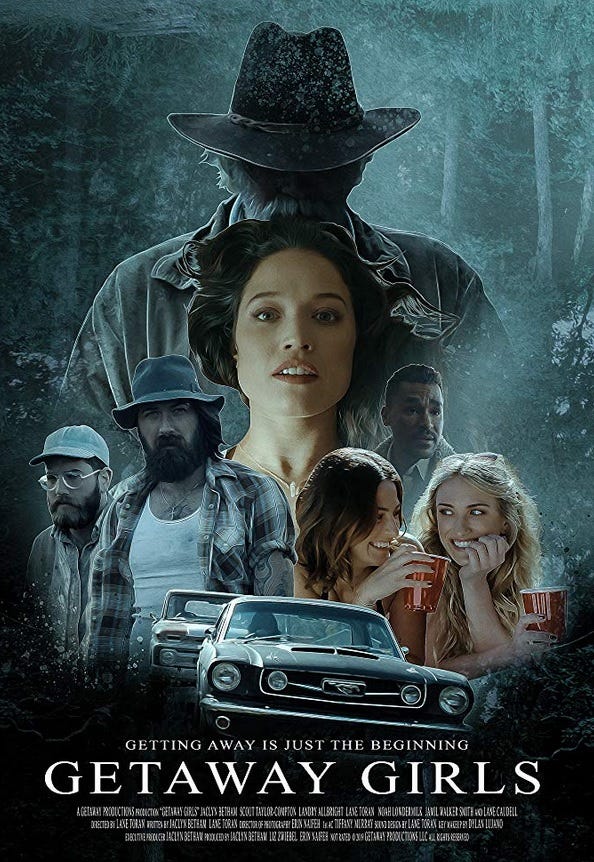
The acting return of Lane Caudell — and film directing debut of his son, Toran.
Hello, Franklin High!
Sadly, Hanging on Star and Goodbye, Franklin High — like this writer’s two cherished Kim Milford rock movies, Song of the Succubus and Night of the Full Moon — haven’t been in reruns on U.S television UHF stations in close to 40 years.
Hanging on a Star made it to VHS tape. In all the years of this writer haunting video stores and the video cut out bins of libraries and vintage vinyl outlets, an official VHS version of Goodbye, Franklin High has yet to appear — although taped-from-broadcast TV clips of the film have appeared on video sharing sites. This writer once owned two used copies of Hanging on a Star: one tape swelled up from moisture and molded-out; the tape of its replacement shredded into pieces inside the VCR. A home tape version of Goodbye, Franklin High — sandwiched between Wes Craven’s Chiller (starring Michael Beck of The Warriors), Circle of Iron (starring David Carradine and Jeff Cooper), and Over the Edge (starring Matt Dillon) — burnt out into blue-screen mode.
It’s been almost 20 years since I’ve seen either of Lane’s films. It seems that, unlike The Toolbox Murders, both of Lane’s cherished leading roles for Cal-Am Productions seem to be lost — forever.
Will we Lane Caudell fans ever see a DVD release of Goodbye, Franklin High or Hanging on a Star? Yes! It seems there is hope. A company by the name of Park Circus/Arts Alliance, a film distribution company that deals a classic back catalog of films from the 1970s and 1980s, shows both of Lane’s films in their catalog.
Then, during the course of researching this article, this writer discovered screen caps from Goodbye, Franklin High with TV transmission watermarks for THIS-TV, a U.S-based free-to-air cable network launched in 2008 and owned in part by MGM Studios — the studio that originally distributed the films in 1978. Most of the channel’s on-air product is from the MGM vaults.
So we Lane Caudell fans will cross our fingers in the hope that Park Circus and MGM Studio will reissue both films as a double DVD — complete with in-depth interview vignettes featuring Lane and his co-stars, along with commentary tracks from Lane. That would be awesome.
All Hail Toran of Malveel!
As I previous stated in my Medium retrospective on Lane’s fellow-reluctant teen-idol doppelganger of Kim Milford: As with the many lost and forgotten musical and movie phantoms this writer champions, I complete this article with gratitude. Gratitude that the digital realm is able to preserve and reignite careers once thought vanished and forgotten — and that Lane’s fans can communicate with one another and share the love; gratitude that this humanity-stripping beast called the Internet helped reconnect this writer with an old music and cinematic friend.
So once again, this analog-spewing curmudgeon sits down in front of his keyboard to partake of yet another plate of digital crow. It’s time for me to give up my analog battle cry, surrender and embrace the web, for it is my friend.
Besides . . . it’s really getting hard to choke down these nasty birds. Okay, well then. Let me eat my crow.
Bring ye my mustard, wench! For ye ride into battle at the sun’s rise! The kingdom of Malveel shall rise again!
Lane Caudell and Rockicks?
During this writer’s research into the life and career of Jim Morrison’s reluctant doppelganger, Arthur “The Phantom” Pendragon, I became acquainted with the career of a late-Seventies L.A band by the name of Rockicks. After their failed tenure with RSO Records with 1978’s Inside, Rockicks was courted by MCA Records, only to discover the label wasn’t interested in signing the band as an individual artist — they wanted to recruit Rockicks as the backing band for an artist already a part of the MCA roster.
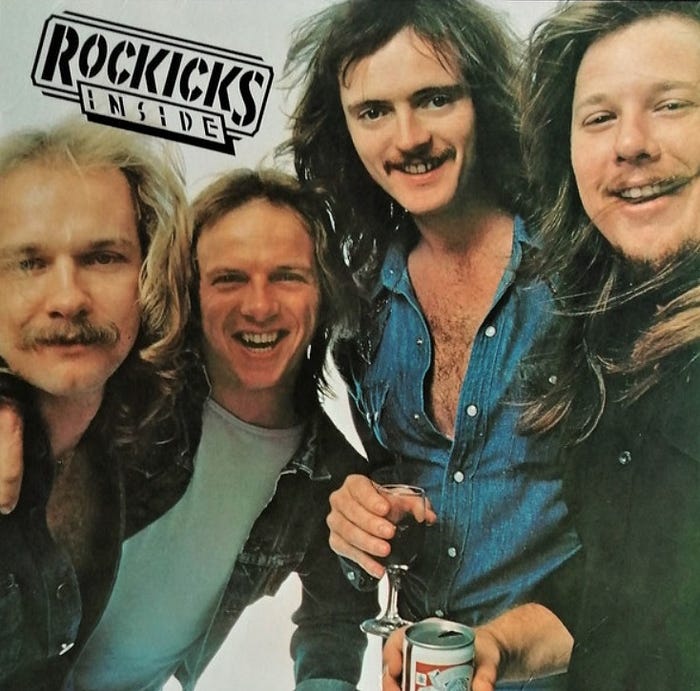
At the time of Rockicks’ negotiations with the label, MCA was committed to developing a solo career for Eric Bruann — who was responsible for most of the post-Sixties output by psychedelic rock/proto-metal pioneers Iron Butterfly — and British blues singer Ray Kennedy — who penned hits for the Beach Boys and the Babys. At the time, Bruann fronted Iron Butterfly; then under the MCA banner, the label’s prefabricated “supergroup” for Kennedy, known as KGB, fell apart. So, in the pages of The Ghosts of Jim Morrison, this writer reached the conclusion that the artist that MCA wanted Rockicks to back was either Bruann or Kennedy.
However, as result of the preceding chronicle on the career of Lane Caudell, this writer has come to the new conclusion that this forgotten mystery artist that Rockicks was to support was Lane Caudell. Now, that doesn’t mean Lane was involved, but the label probably played the band’s Lane’s music and made their pitch. This conclusion is reached as result of the Warren Enter Management connection between Rockicks and Caudell. Also: Lane’s two MCA albums were issued in 1978 and 1979, around the time Rockicks was dropped by RSO Records and MCA Records expressed interest.
Rockicks, as result of that band’s founder, Brian Naughton, being a former member of the Grass Roots, and his ex-Grass Roots mate, Warren Enter, managing both Lane Caudell’s Skyband and Naughton’s post-‘Roots endeavors . . . is it possible that Warren Enter attempted to pair the musicians together?
NOTE: A complete listing of Lane’s Discography and Film credits appears after the video and photos section, “The Lane Caudell Music, Movie, and Photo Library.”
END
The Lane Caudell Movie, Music, and Photo Library
You Tube playlist curated by R.D Francis featuring Lane’s solo and movie work, along with some of Peter Beckett’s work.

Lane (at age 18) with Dick Clark on the set of 1968's Killers Three, Dick Clark’s scripted-produced “hillbilly-moonshine exploitation” Drive-In classic starring country legend, Merle Haggard.
Shot in Lane’s home state of North Carolina, it is believed Lane worked on the film in some capacity, possible as a background actor. The film was shot in Coleridge, just outside of Asheboro.


The 7" 45-rpm of Lane’s first official hit single, a Dutch Top 40 hit recorded in Los Angeles with the Dutch folk-pop band, The Cats — composed with Lane’s long-time producer/partner, Al Capps.
Upon leaving Skyband, Lane briefly joined the group and toured Europe. The single charted in the Netherlands, Belgium, and Germany — reaching #1 in a few European countries — and continues to be a “classic hits” radio staple in Europe.





Single releases from Lane’s late ’70s MCA albums.
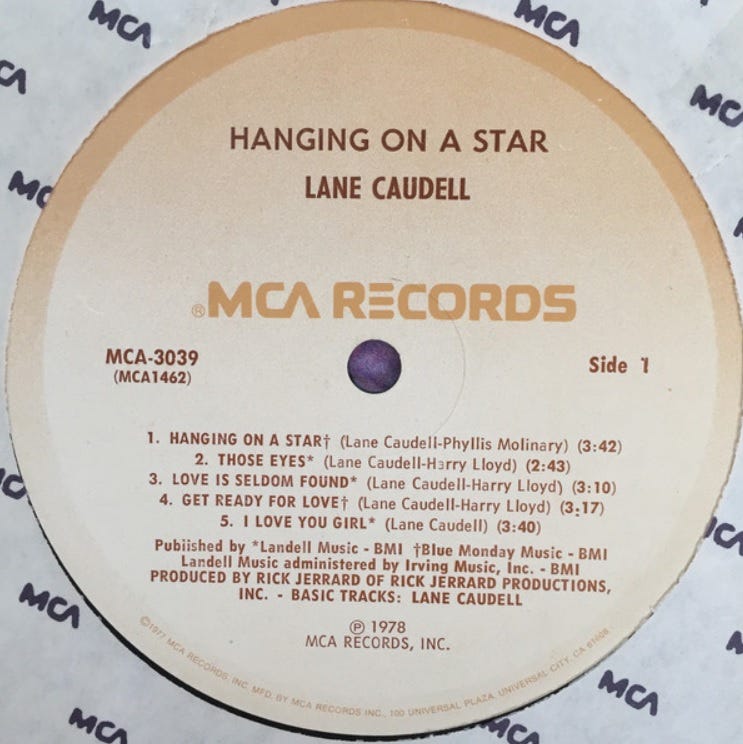



The A and B Sides to Lane’s two late ’70s MCA albums.
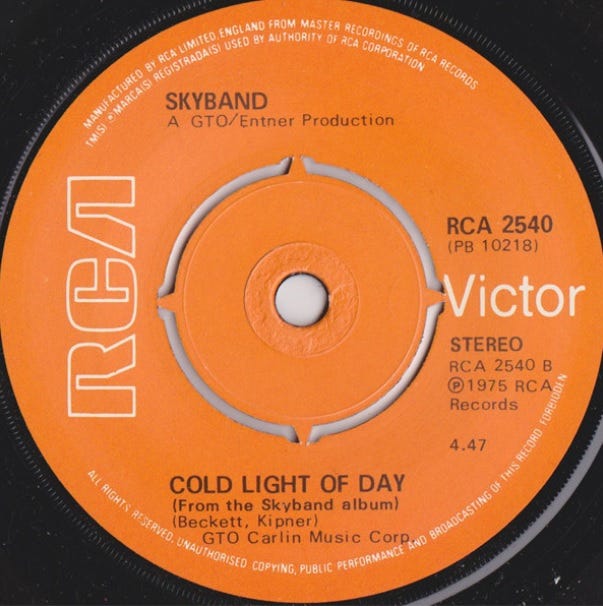



Skyband’s first “7 45-rpm single and album for RCA from 1975. No image for their second single, “Pie in the Sky,” is available.
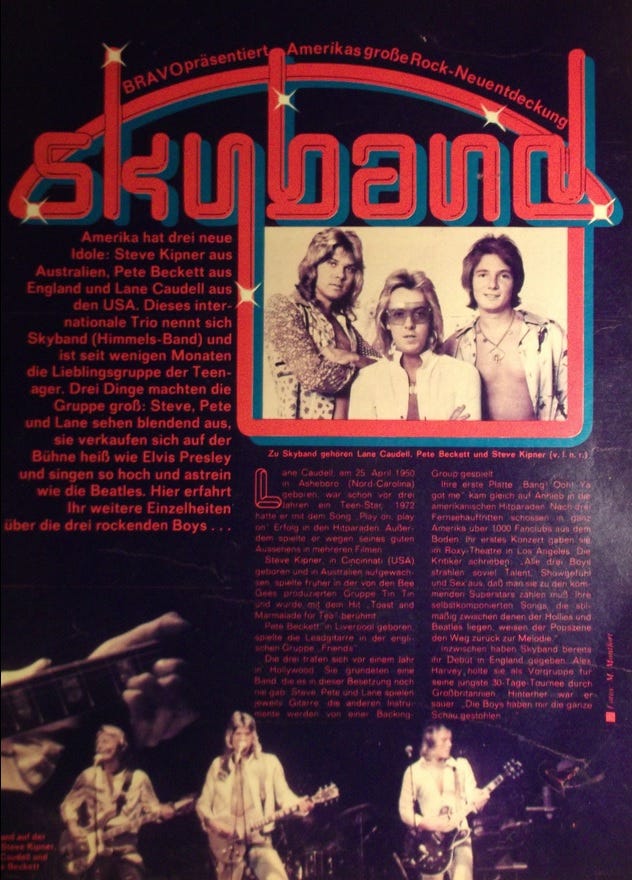
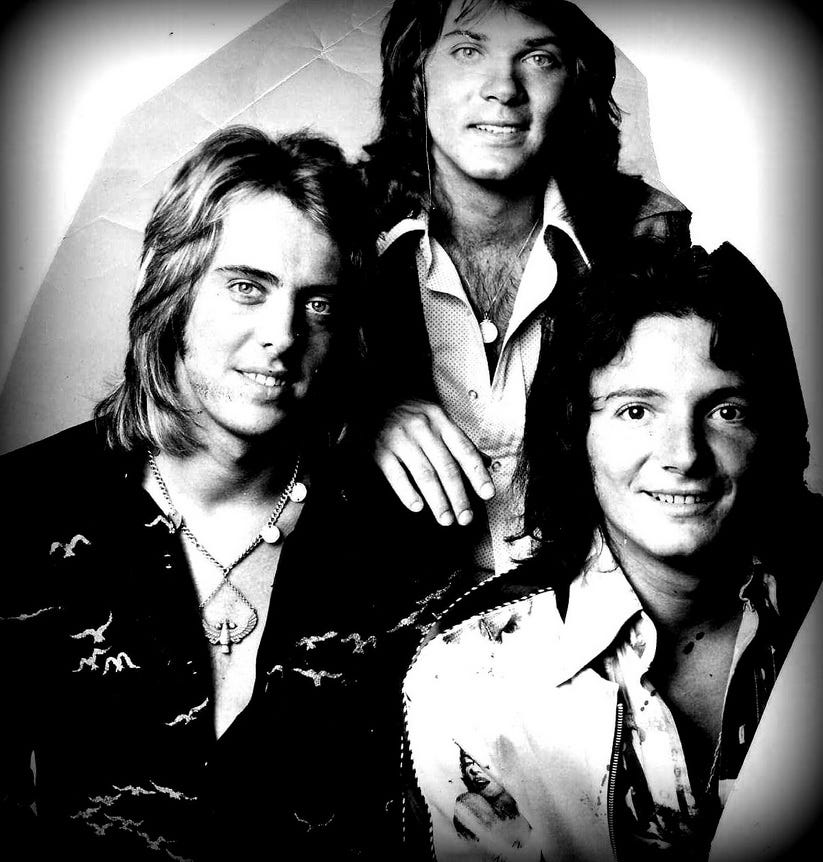


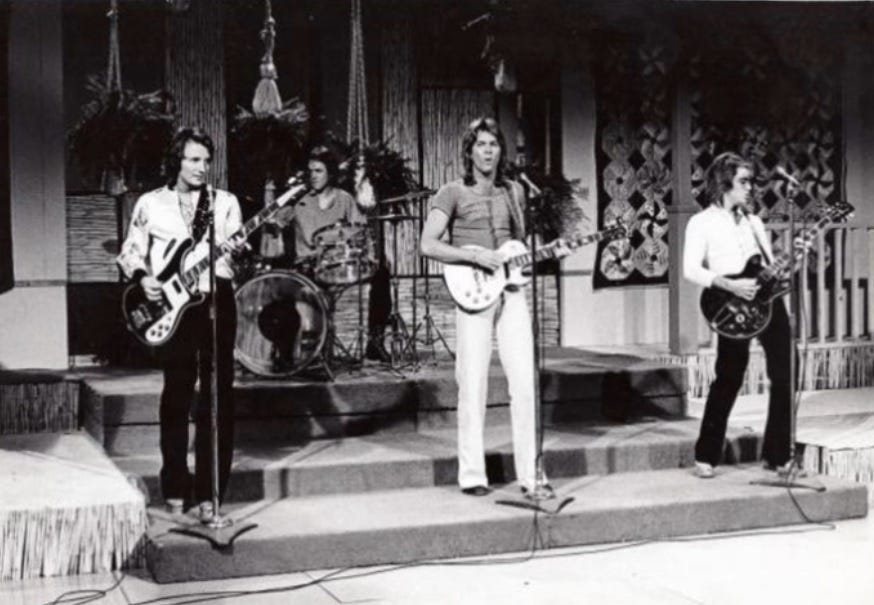
German magazine promotional (top left) along with other Skyband promotional photos.
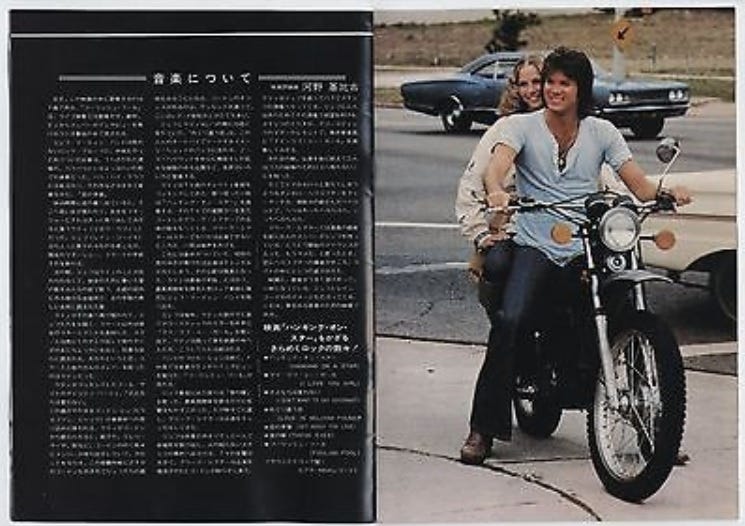


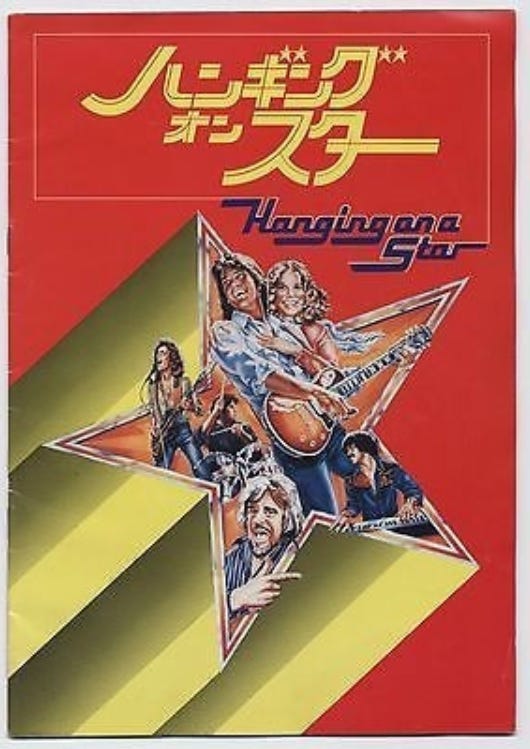



Hanging on a Star publicity materials, featuring the Japanese souvenir book and theatrical one-sheet, along with Lane’s co-star, Deborah Raffin.




Lane wears a cowboy hat in a Days of Our Lives era publicity shot, along with two of his teen idol magazine spreads. Notice in the Goodbye, Franklin High promotional, it mentions Lane’s work with The Cats — and fails to mention his involvement with Skyband or his early solo singles.
This was the result of Lane working with MCA Records at that point. The Cats were with MCA — Skyband and his solo singles were with RCA and Capitol.
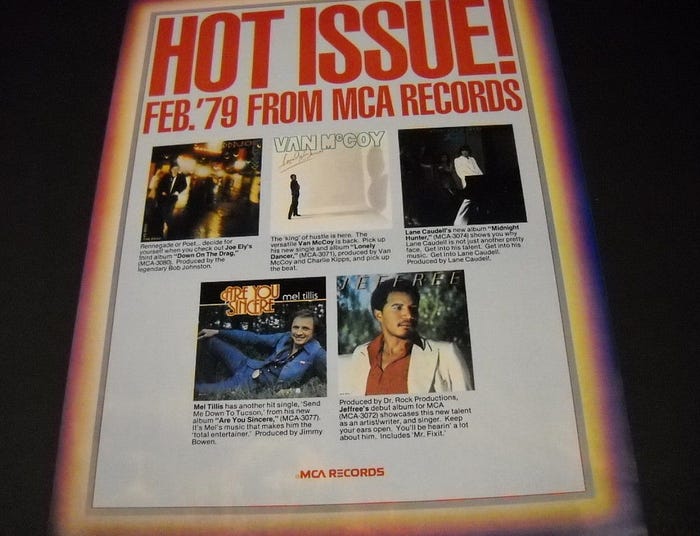
MCA magazine promotional featuring Joe Ely and Lane Caudell.
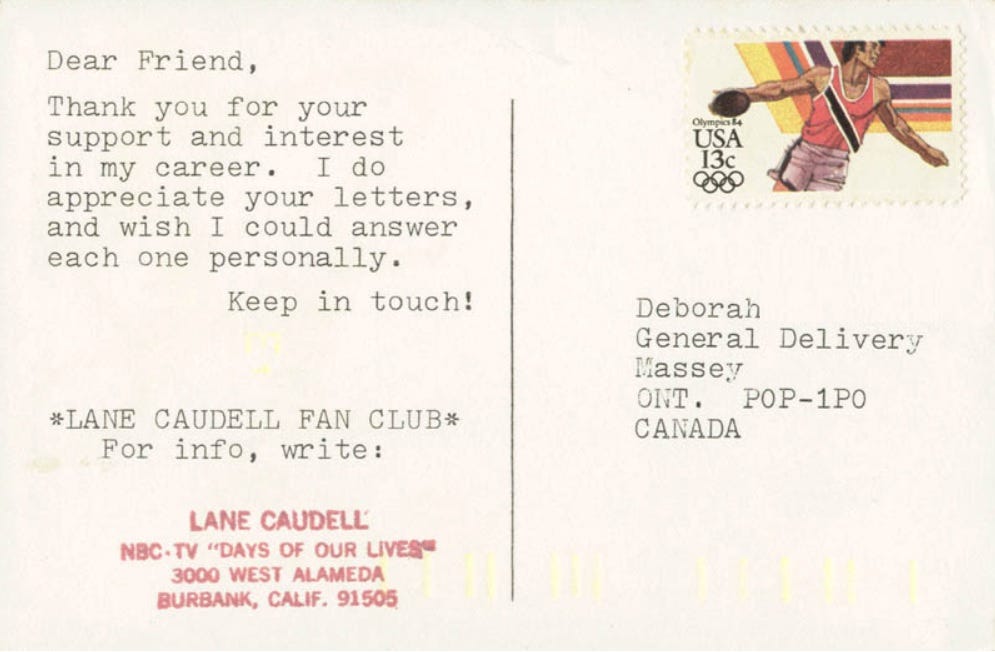

Days of Our Lives era promotional photo-postcard.


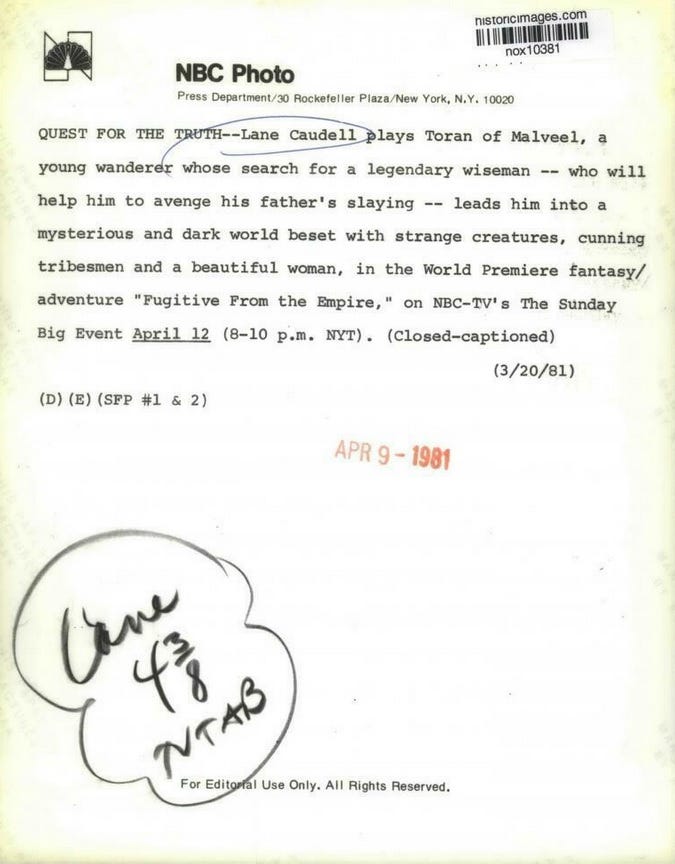
NBC-TV promotional photo from Archer: Fugitive from the Empire.

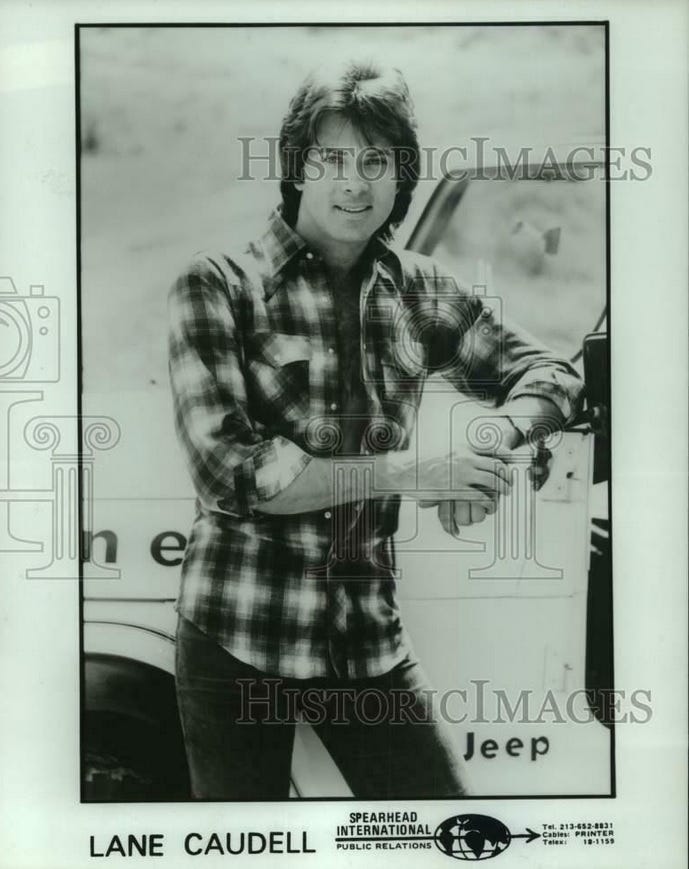
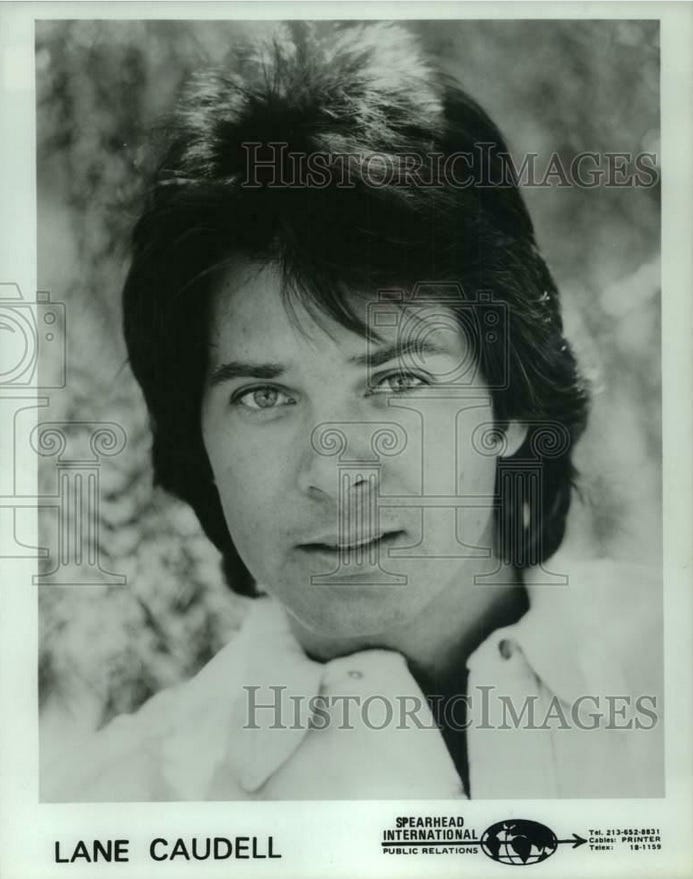
Lane’s sheet music for his early country tune, “Souvenirs,” and Days of Our Lives era promotional photos.
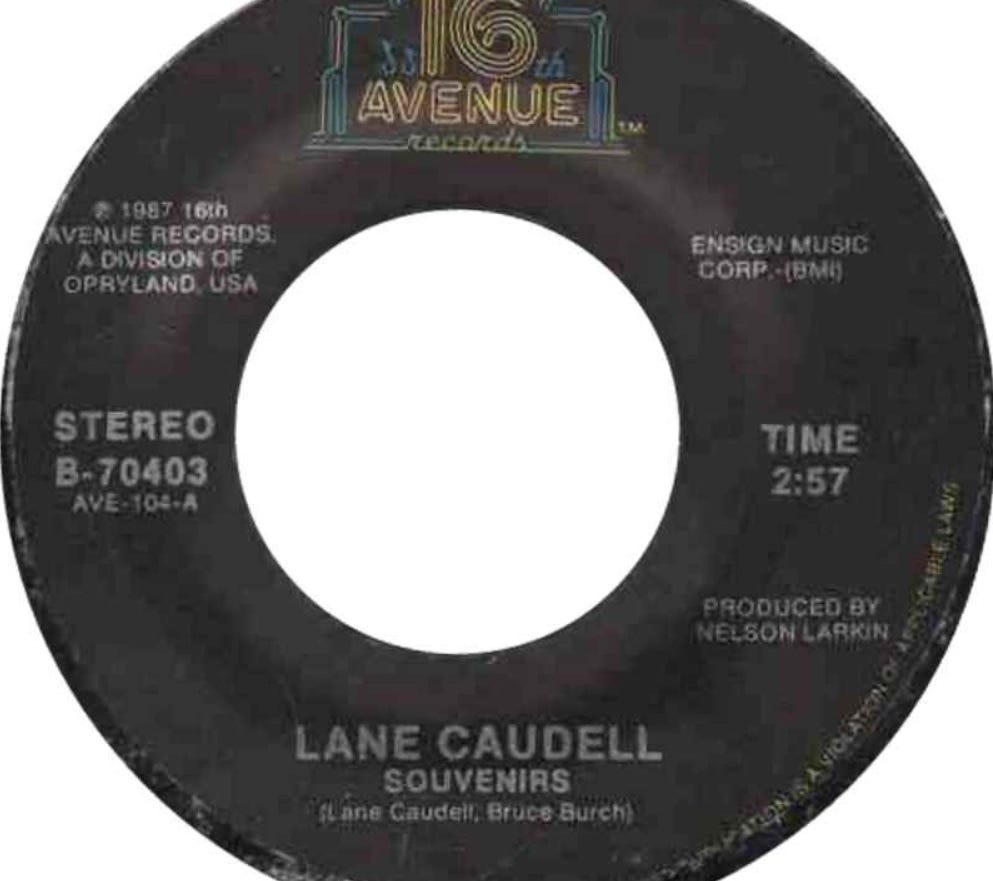
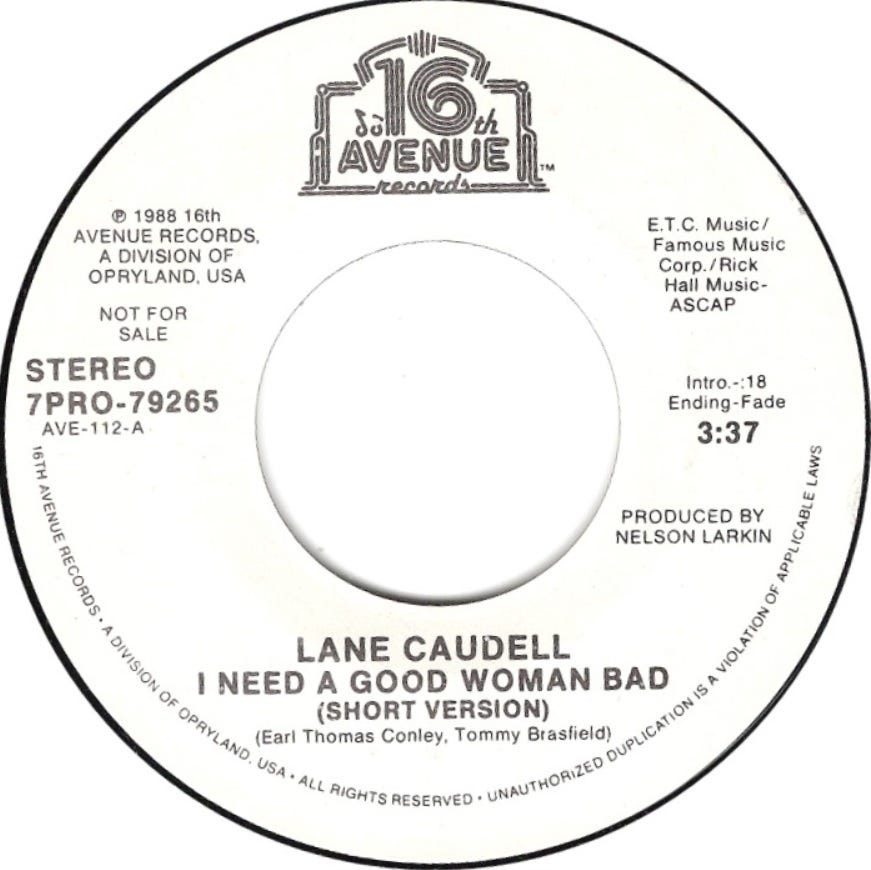

Lane’s two late ’80s country singles and his last “teen idol” era single for Private Stock — also home to David Soul’s teen-idol era singles . . . along with Frankie Valli and Blondie.
Lane Caudell Discography
1972 (July) — “Let Our Love Ride b/w You, Him & Her — Capitol Records
1973 (January) — “Play On, Play On b/w And Then We Danced — Capitol Records
1973 — “Should I Care” (mono; b/w stereo version) — Metromedia Records
1974 — “Come Sunday” (for Netherland’s The Cats) — MCA Records
1975 — Skyband (album) — RCA Records
“Bang! Ooh, Ya Got Me! b/w Cold Light of Day” single
“Pie In the Sky b/w Dream Machine” single
1976 — “High in the Mountains” — Sasquatch: The Legend of Bigfoot (film soundtrack; w/Al Capps)
1976 (December) — “Alabama Boy” (mono b/w stereo version) — Private Stock Records
1978 — “Buffalo Rider” — The Life and Legend of Buffalo Jones (film soundtrack; w/Al Capps)
1978 — Hanging on a Star (album) — MCA Records
“Hanging on a Star b/w I Love You, Girl” — (single issued May)
“Those Eyes b/w I’m an Empty Man” — (single issued July)
1979 — Midnight Hunter (album) — MCA Records
“Love, Hit and Run” — (mono b/w stereo version; single issued February)
1986 — “Better Man Than Me” — 16th Avenue Records
1987 (August) — “Souvenirs b/w The Honeymoon is Over” — 16th Avenue Records
1988 (March) — “I Need a Good Woman Bad” — (short version b/w long version) — 16th Avenue Records
1993 — “Guest of Honor” — Fire in the Sky (film soundtrack)
Television and Filmography
1977 — Satan’s Cheerleaders — Stevie — (Executive Producer: Mike MacMcFarland)
1978 — Goodbye, Franklin High — Will Armer — (Cal-Am Productions/MGM Studios)
1978 — Hanging on a Star — Jeff Martin — (Cal-AM Productions/MGM Studios)
1979 — Good ‘Ol Boys — Cooter — (U.S TV Movie/Series Pilot for NBC-TV/Universal Studios)
1980 — Battles: The Murder That Wouldn’t Die — Joe “Deacon” Johnson — (U.S TV Movie/Series Pilot for NBC-TV/Universal Studios)
1981 — The Archer: Fugitive from the Empire — Toran of Malveel — (U.S TV Movie/Series Pilot for NBC-TV/Universal Studios) — Foreign Theatrical titles: Fugitive from the Empire, The Archer and the Sorceress, The Magic Bow
1982–1983 — Days of Our Lives — Woody King — (U.S Daytime NBC-TV series)
Recommended Supplement Reading
I’m with the Band: Confessions of a Groupie by Pamela Des Barres:
The ultimate rock ’n’ roll groupie and industry insider, Des Barres weaves wonderful rock tales — and speaks extensively of her early ’70s romantic relationship with Lane Caudell in its pages.
Bubblegum Music is the Naked Truth by Kim Cooper:
The ultimate criticism and history guide regarding the bubblegum and teen idol music industry.
CASHBOX: April 19, 1975 (Skyband Review)
ROXY L.A. — It was a cold, clear and crisp evening outside, but inside the Roxy Theatre people were standing on top of each other as RCA Records was showcasing one of its upcoming groups — Skyband. From out of the wild blue yonder, Skyband, composed of Steve Kipner, Pete Beckett and Lane Caudell, rocked the Roxy with a flaming set that highlighted their diverse and vibrant mélange of music. The crowd was all ears as Skyband worked their set very well, keeping the tempo of the show constantly going with different speeds to keep the excitement flowing throughout the entire evening.
From country-flavored rock to high-spirited and driving rock, Skyband is a hot group, as each member of Skyband does his own individual thing — totally complimenting the other members of the band very well. Doing material from their debut album on RCA, entitled Skyband, the group dressed in satin pants and shirts really were up to please the crowd and that’s what they did. “Dream Machine,” one of the high points of their album, captures the ambitions of Skyband as they proclaim in a tongue-in-cheek manner: I can be a rock ’n’ roll idol /I can be a movie star /Astral taxi into somewhere /Nowhere is too far. “Pie in the Sky” was another of their varied numbers that has excellent Top 40 possibilities because it is a very catchy tune that bounces lightly along with all three members of Skyband blending-in a Hollies’ sound vocal, chanting the title lyric “Pie in the Sky,” deliciously.
Lane Caudell should be singled out for his outstanding job on “Spotlight on the Dancer,” playing the rock ’n’ idol role marvelously as a bright yellow spot glistened against his satin outfit, swaying and lunging his hips to the raunchy rock beat. Three bare-chested girls were scattered among the crowd doing a marvelous go-go routine that really added well to make this a super-show stopper. Closing out the set: Skyband did their current, fast-rising single, “Bang! Ooh! Ya Got Me,” which is a high-energy rhythm-gem featuring great violin and guitar licks with a golden gun being shot at the end — finishing their fine show with a bang.
* Cashbox transcription and posting courtesy of www.peterbeckett-player.com
* Peter Beckett biography/career information courtesy of www.peterbeckett-player.com
* Visit Skyband and Peter Beckett on their official Facebook pages.


What can I say, I am loyal to my music and movie “phantoms.”
